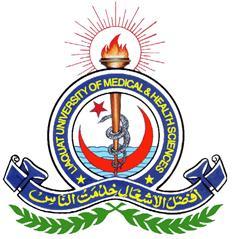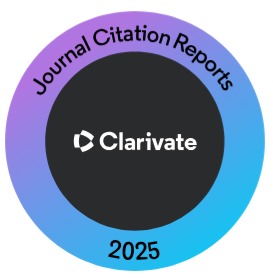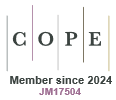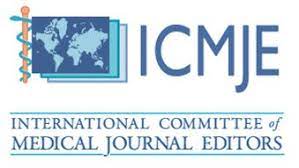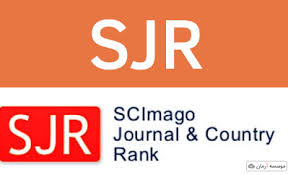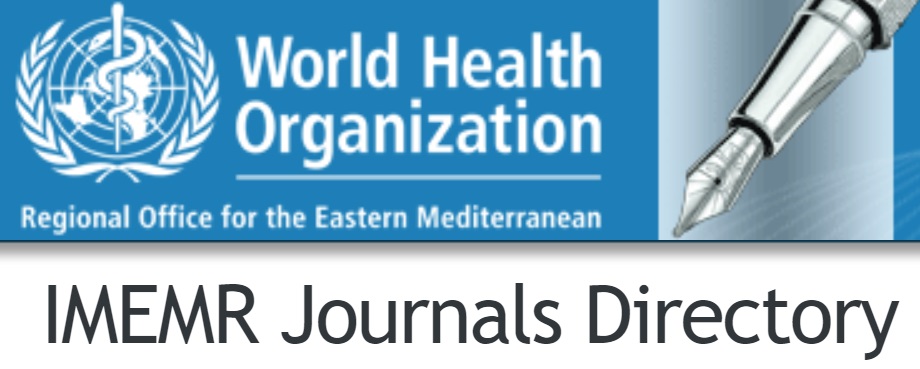SLPs Perspective on Stuttering Intervention through Technological Rehabilitation
Keywords:
Speech, language, SLP's, Therapy, Technological, RehabilitationAbstract
Objective: To investigate the practising patterns of speech-language pathologists regarding technological rehabilitation for stuttering intervention.
Methodology: This study employed a cross-sectional, quantitative design using a 5-point Likert scale. The data were collected from January to June 2023 at Riphah International University. This study employed convenience sampling techniques. The research focused on finding tools and Software for pattern-based therapy techniques that utilize technological rehabilitation to improve the therapy process. The Data was collected from Speech Therapist Online through Google Forms and Riphah Rehabilitation Clinic. The inclusion criteria consist of only qualified Speech and Language Pathologists (SLPs) who use technological rehabilitation in their therapies; any other disorders and comorbid disabilities were excluded. Data analysis was conducted through SPSS Version 21.
Results: The study sample consisted of 242 respondents, including qualified speech-language pathologists (SLPs) and rehabilitation therapists from public and private hospitals and clinics. Results of the study show the highest frequency of Using technological rehabilitation is beneficial for patients (117), Use of Technology helps to overcome lifelong challenges (111), Use of Software and devices in stuttering therapy (120), and Cost of Software is high (100)
Conclusion: The technological Rehabilitation in stuttering therapy; the majority of respondents give preference to using it, and they also recommend it to their peers. A similar number of respondents believe that technological rehabilitation needs Software and devices that are costly, but they are hopeful about its future. The research emphasizes the call for future research on low-cost, accessible technology tools and longitudinal studies to measure their effectiveness.
References
Mulle K. Reimagining Rhetorical Ability:(Dis) Embodiments of Disabled Speakers in the StutterTalk Podcast and the 2020 Democratic National Convention. 2022.
Sheikh SA, Sahidullah M, Hirsch F, Ouni S. Machine learning for stuttering identification: Review, challenges and future directions. Neurocomputing. 2022; 514: 385-402.
Logan KJ. Fluency disorders: Stuttering, cluttering, and related fluency problems: Plural Publishing; 2020.
Chaudhary C, John S, Kumaran DS, Guddattu V, Krishnan GJT. Disability. Technological interventions in stuttering: A systematic review. 2022; 34(4): 201-22.
Chen Y, Abel KT, Janecek JT, Chen Y, Zheng K, Cramer SC. Home-based technologies for stroke rehabilitation: A systematic review. Int J Med Informatics. 2019; 123: 11-22.
Repetto C, Paolillo MP, Tuena C, Bellinzona F, Riva G. Innovative technology-based interventions in aphasia rehabilitation: a systematic review. Aphasiology. 2021; 35(12): 1623-46.
Clark L, Cowan BR, Roper A, Lindsay S, Sheers O, editors. Speech diversity and speech interfaces: Considering an inclusive future through stammering. Proceedings of the 2nd Conference on Conversational User Interfaces; 2020.
Sommer M, Waltersbacher A, Schlotmann A, Schröder H, Strzelczyk A. Prevalence and therapy rates for stuttering, cluttering, and developmental disorders of speech and language: Evaluation of German health insurance data. Front Human Neurosci. 2021; 15: 645292.
Kim S, Arbel Y. Immediate and delayed auditory feedback in declarative learning: An examination of the feedback related event related potentials. Neuropsychologia. 2019; 129: 255-62.
Rojas Contreras D, Saavedra Rojas P, Aravena Gallardo SL. Stuttering intervention in children: an integrative literature review. Revista CEFAC. 2022; 24(2): e7521.
Raosoft I. 2021.
Khemapech I, Sansrimahachai W, Toachoodee MJ. Telemedicine meaning, challenges and opportunities. 2019; 71(3): 246-52.
Ai OC, Yunus J, editors. Computer-based system to assess efficacy of stuttering therapy techniques. 3rd Kuala Lumpur International Conference on Biomedical Engineering 2006: Biomed 2006, 11–14 December 2006, Kuala Lumpur, Malaysia; 2007: Springer.
Lewis C, Packman A, Onslow M, Simpson JM, Jones M. A phase II trial of telehealth delivery of the Lidcombe Program of Early Stuttering Intervention. 2008; 17(2): 139-49.
Mishra N, Gupta A, Vathana DJIJoST. Optimization of stammering in speech recognition applications. 2021; 24(3): 679-85.
Boey R, Lefevere SJ. An evaluation of telepractice use during the COVID-19 pandemic for the treatment of speech and language disorders in Belgium. 2022; 14(1).
Prasanna V, Perera I, editors. Speakup-a mobile application to train and overcome stuttering. 2019 19th International Conference on Advances in ICT for Emerging Regions (ICTer); 2019: IEEE.
Aldukair L, Ward D. Telepractice application for the overt stuttering assessment of children aged 6–15 years old. 2022; 57(5): 1050-70.
Wang JC, Hsieh CY, Kung S. The impact of smartphone use on learning effectiveness: A case study of primary school students. 2023; 28(6): 6287-320.
Allen C, McGroarty A, Aydin A, Perspectives on the past and the future: Clients' views for adult stammering. Rehabilitation. 2014; 21(11): 516-25.
Bhattarai B, Sanghavi T, Abhishek B. Challenges in delivering tele-practice services for communication disorders among audiologists and speech language pathologists. Head Surg N. 2022; 74(Suppl 3): 4360-5.
Khasawneh M. The Role of the Multi-Sensory Environment in Developing Learning Skills Among Students with Learning Difficulties in the Asir Region. 2024; 12(1).
Sidavi A, Fabus R. A review of stuttering intervention approaches for preschool-age and elementary school-age children. Disorders. 2010; 37(Spring): 14-26.
Bleakley A, Rough D, Roper A, Lindsay S, Porcheron M, Lee M et al., editors. Exploring smart speaker user experience for people who stammer. Proceedings of the 24th International ACM SIG-ACCESS Conference on Computers and Accessibility; 2022.
Elbeltagy R, Waly EH, Bakry H. Teleaudiology practice in COVID-19 pandemic in Egypt and Saudi Arabia. 2022; 17(2): 78-83.
Gupta G, Chandra S, Dautenhahn K, Loucks T. Stuttering treatment approaches from the past two decades: comprehensive survey and review. 2022; 11(11): 10.47611.
Butt M, Khan A, Noreen H, Noureen L, Yaqoob S, Rashid AJ. Perspective of Speech Language Pathologists Regarding Stammering Therapy Techniques: SLP Perspective. 2022; 10(02).
Mwangi IA, Karia MK, Wairungu GM. Modification of Prolonged Speech Therapy in Treating Stuttering and Its Associated Negative Traits among Adults: Case of Nairobi Stammering Support Group, Nairobi County, Kenya. 2023; 9(3).
Downloads
Published
How to Cite
Issue
Section
License
Copyright (c) 2025 Journal of Liaquat University of Medical & Health Sciences

This work is licensed under a Creative Commons Attribution-NonCommercial-ShareAlike 4.0 International License.
Submission of a manuscript to the journal implies that all authors have read and agreed to the content of the undertaking form or the Terms and Conditions.
When an article is accepted for publication, the author(s) retain the copyright and are required to grant the publisher the right of first publication and other non-exclusive publishing rights to JLUMHS.
Articles published in the Journal of Liaquat University of Medical & health sciences are open access articles under a Creative Commons Attribution-Noncommercial - Share Alike 4.0 License. This license permits use, distribution and reproduction in any medium; provided the original work is properly cited and initial publication in this journal. This is in accordance with the BOAI definition of open access. In addition to that users are allowed to remix, tweak and build upon the work non-commercially as long as appropriate credit is given and the new creations are licensed under the identical terms. Or, in certain cases it can be stated that all articles and content there in are published under creative commons license unless stated otherwise.


